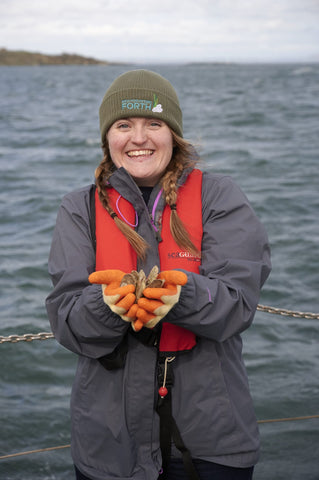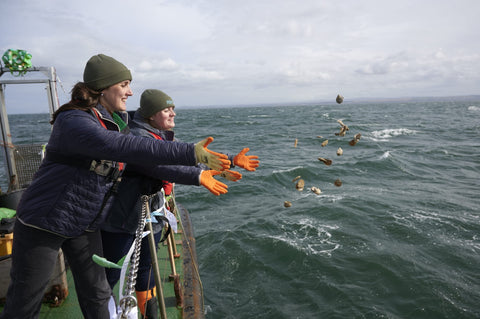A Wee Recap
As covered previously, the oyster beds in Firth of Forth covered an extensive area of approximately 166 km², thus making them arguably the largest European Flat oyster (Ostrea edulis) beds in the world.
Unfortunately, due to human pressures, a combination of over exploitation and increasing industrial pollution, the beds had likely disappeared in the early years of the 20th century. A set of extensive surveys in the 1950s failed to find a single live oysters, and as a result the Native Oyster was declared functional extinct in the Firth of Forth.

But not all hope is lost, and this is where the project #restorationforth comes in:
“Restoration Forth is a major marine restoration programme working with communities to restore seagrass habitats and native oyster populations in the Firth of Forth.
Restoration Forth will create a toolkit for marine restoration- inspiring communities in delivering further marine restoration efforts across Scotland, securing by 2030 at least 42 hectares of critical coastal habitat restored in the Firth of Forth, and influencing Scottish Government policy for stronger marine protection.”
Making it Happen
And so this week, and after a huge effort by so many people, the restoration of Native oysters to the Firth of Forth was started.

We had the pleasure of being there to help and it was a very special moment watching as the first oyster in probably 100 years went back into the Firth of Forth. Fingers crossed that they like their new home and start doing their thing - rebuilding the ecosystem.
Update (29 Sept 2023)
Unfortunately the nice video report we linked to on YouTube has been taken down, and so as an alternative here are a couple of newspaper links:
Oysters returned to the Firth of Forth
Oysters returned after a century of extinction.
Next Steps
And what of the next steps? Well, there are several thousand more oysters still waiting to be deployed and that shall happen in the next month or two. Then the scientists take over and start the process of monitoring the site to check on progress over the next 12 to 24 months. All being well, and if the project can secure more funding, it is hoped the effort can be expanded.
In one way, it is somewhat disappointing that great environmental efforts like this which are trying to fix errors we, as the custodians of the planet, have made, have to struggle and fight very very hard to find funding just to continue. There really should be some sort of structured support in place that is coordinated by government.
The hope is that sharing these efforts far and wide inspires people (you!) to demand change, this is the only way to ultimately make it happen. It is late in the day and it needs to happen, for the sake of all our tomorrows.
And us?
Well, we have to get busy with getting those other restoration oysters ready. Then we have to start thinking about securing the farm for the upcoming winter. Also the season for Native oysters is also upon as and so we need to try and get some of our remaining adults cleaned up so they look their best!
Keep an eye out and we shall let you know when we have a few available for sale. As in previous years, we shall only be releasing these 'special little beasties' in small batches.
